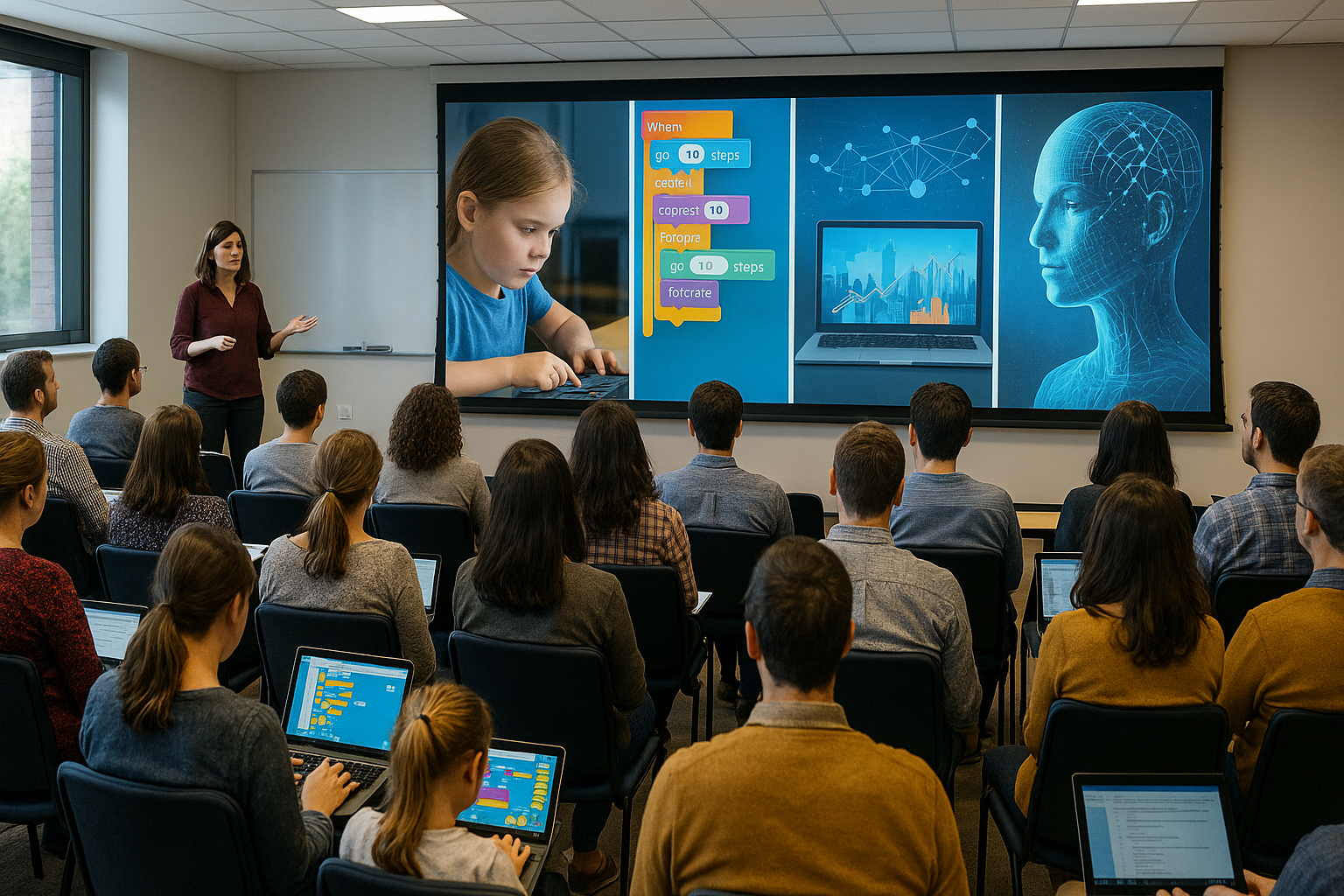From preschool coding to AI: World Bank outlines global lessons in digital literacy
The World Bank’s new study, drawing on UNESCO, OECD, and other research, warns that simply exposing children to technology is not enough, structured pedagogy, strong infrastructure, and early compulsory digital education are essential. It calls on governments, especially in Africa, to act now or risk deepening the global digital divide.

A new World Bank Education Working Paper, prepared by Changha Lee, Barbara Freeman, Agatha Gikunda, and Mabel Martínez under the guidance of the World Bank’s Education Global Practice and supported by the Mastercard Foundation, brings together insights from UNESCO, the OECD, the Brookings Institution, and a wide spectrum of academic and program-specific research. The report, released in June 2025, examines how digital skills are being taught in 22 countries and through 23 non-formal learning programs. It asks a pressing question: in a world saturated with technology, what are the most effective ways to turn exposure into competence? Evidence shows that without structured pedagogy, digital natives often lack the deeper problem-solving, creativity, and critical thinking required to thrive in modern economies.
The Divide Between High- and Low-Income Nations
The report reveals a striking divergence between wealthy nations and those still struggling with infrastructure. In Estonia and Uruguay, children begin learning digital skills in preschool, often through play-based unplugged activities that seamlessly build into coding, robotics, and even artificial intelligence at higher levels. Korea introduces block-based coding by grade five, while Singapore requires two years of upper-secondary computer science. France integrates digital skills into science and mathematics, while Malaysia begins formal instruction in coding and robotics by grade four. These examples illustrate an approach where digital education is not optional but compulsory, embedded across the system.
The contrast with many African countries is stark. Nigeria, Rwanda, South Africa, and Uganda rely heavily on stand-alone ICT courses, introduced later in the curriculum, and face persistent challenges of patchy internet, under-trained teachers, and scarce devices. While policies in Kenya and Uganda call for nationwide digital literacy, the gap between ambition and implementation remains wide. In Senegal, only one-fifth of schools met the minimum digital infrastructure requirements in 2021, leaving rural children especially disadvantaged.
Non-Formal Programs Step Into the Breach
Where formal systems falter, non-formal education is offering alternatives. Code.org, freeCodeCamp, Khan Academy, Scratch, and Girls Who Code have become household names in global digital learning. These platforms, often free and accessible worldwide, reach millions with engaging content from block-based coding for children to advanced full-stack development. Locally rooted organizations such as Moringa School in Kenya, Andela Learning in Africa, and Google Career Certificates are also making waves by aligning curricula with job market needs.
The strengths of these initiatives are clear: inclusivity, accessibility, and adaptability. Many are multilingual, designed to attract girls and other underrepresented groups, and grounded in practical, project-based learning. Yet, as the report stresses, they cannot replace the responsibility of national education systems to embed digital skills across all classrooms. Their value lies in showing how flexibility, equity, and innovation can be scaled into the mainstream.
Pedagogy at the Core of Digital Literacy
The review underscores that digital skills must be taught intentionally, progressively, and with clear guidance. Experiential and game-based approaches, robotics kits, coding games, makerspaces, spark curiosity and transform abstract concepts into practical capabilities. Blended learning, which combines self-paced online study with teacher-led classes, consistently outperforms either model alone. Block-based programming, with its visual drag-and-drop logic, lowers barriers to entry and proves especially effective in engaging girls and hesitant learners. Hackathons and bootcamps offer bursts of real-world practice, though their long-term benefits are still being studied.
What unites these approaches is the irreplaceable role of teachers. Even in highly student-centered models, educators act as guides, scaffolding knowledge and ensuring that curiosity translates into structured skill development. The report calls for heavy investment in teacher training, lesson planning, and digital competence to sustain this momentum.
Closing the Infrastructure Gap and Moving Forward
Infrastructure and governance remain the silent pillars of success. Without affordable devices, reliable connectivity, relevant digital content, strong leadership, and cohesive strategies, even the most imaginative teaching methods cannot flourish. Estonia’s Digital Accelerator program, which mobilizes entire school leadership teams to embed technology across the curriculum, is offered as a model. India’s National Education Policy 2020, with its focus on digital training and infrastructure, is another example of systemic ambition. But in much of Sub-Saharan Africa, the distance between policy vision and classroom reality continues to undermine progress.
From this wide-ranging study, seven key recommendations emerge, with Africa in particular focus. The report urges governments to make digital skills compulsory now, start as early as preschool, and invest heavily in infrastructure. Adopting clear frameworks such as the European Union’s DigComp 2.2 can help structure progression, while a combined approach, mixing stand-alone courses with integration into other subjects, is essential. Pedagogies must be structured but student-centered, inclusive of all learners, and informed by the flexibility of non-formal programs.
If governments fail to act, the digital divide will widen, excluding millions from future opportunities. But if reforms are bold and inclusive, digital literacy can become as fundamental as reading and numeracy. As the report powerfully notes, the ultimate goal is not merely to teach children how to use technology, but to empower them to think, solve, and create in a digital age that defines their future.
- READ MORE ON:
- World Bank
- UNESCO
- OECD
- digital skills
- India’s National Education Policy
- FIRST PUBLISHED IN:
- Devdiscourse
ALSO READ
Contracting Carbon: The World Bank’s Blueprint for High-Integrity Climate Solutions
Carolina Rendón Named World Bank Resident Representative for Dominican Republic
World Bank Urges Mongolia to Seize Mining Boom for Crucial Fiscal Reforms
World Bank Joins MADE Alliance to Drive Africa’s Digital Transformation
World Bank Approves $50M Grant to Boost Competition and Inclusion in Tajikistan










